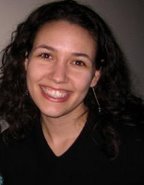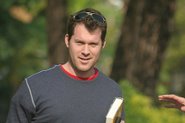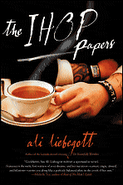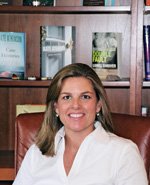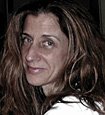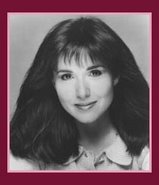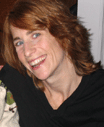



Welcome to “Up Close and Personal.” For every interview I will be introducing a literary personality discussing their views and insights, as well as upcoming literary events around the world.
Today’s interview is with Kathleen De Marco Van Cleve. She is the author of children's book “Drizzle.” She's a screenwriter and also wrote 2 adult fiction novels:
Cranberry Queen which was a
Book Sense 2001 pick, originally optioned by
Miramax Films, and
The Difference Between You and Me 2003, both published by Miramax Books.
While living in New York, Ms. Van Cleve was working as a
film producer and writing partner for many years to Emmy award-winning actor and Golden globe nominee,
John Leguizamo. Mr. Lequizamo is famous for his role "Henri de Toulouse-Lautrec" with Nicole Kidman in
Moulin Rouge and
To Wong Foo Thanks for Everything, Julie Newmar with Patrick Swayze and Wesley Snipe.
Ms. DeMarco Van Cleve was co-writing with Lequizamo in films such as The Secret Life of Jesse Sanchez, under option to Universal Films in Rebel Films, a NY-based production company.
Kathleen DeMarco Van Cleve has also been the
producers of numerous films, among them are: Undefeated, Pinero and Joe the King which won the 1999
Sundance Film Festival Waldo Salt Screenwriting Award, Big Shorty an animated TV series under option to
Nickelodeon, Sexabolix; a Love Story
HBO Films and others.
She had been very active as a Development Executive, seeing through such films as The Story of O, Before He Wakes, King of the Jungle, Murder at 75 Birch Street, The Beast based on the novel by Peter Benchley and others. For several films she managed the development process, she wrote the treatment that sold the project to the studio or network.
Kathleen DeMarco Van Cleve holds her B.S. and B.A. in Creative Writing from
Penn University where she graduated in 1988. She also has dual degree from the
Wharton School College of Arts & Sciences.
She has been a consultant for
NYU's Tisch School of the Arts
M.F.A. dramatic
writing program as well as for Tisch's undergraduate dramatic writing candidates. Ms. DeMarco Van Cleve, also teaches creative writing at the University of Pennsylvania.
Her book for younger readers,
“Drizzle” is about an eleven-year-old girl named Polly Peabody, who lives at her family’s world-famous magical rhubarb farm.
Jennifer Long, a girl from Polly's class does not like her and thinks that everything about her is weird, except her brother Freddy, who she has a crush on. Polly has literally no friends at school but she has a best friend named Harry, which is a rhubarb plant on her family’s unusual Midwestern rhubarb farm. Polly and Harry communicate. Harry nods when he agrees with her and swats her with his leaves when he is angry and Polly can talk with the other bugs.
The most magical thing is every single Monday, at exactly 1:00 p.m. it rains. Also, some of their plants in their rhubarb farm taste like chocolate. One day, her Aunt Edith, shows Polly a secret room with bugs that fly in patterns and spells out words.
Until suddenly the weekly rain stops and plants starts to die. Polly’s seventeen year old brother, Freddie has a mysterious illness. Now, Polly has to make it starts raining again before it’s too late for her brother’s life and the survival of all of the plants and her family’s future.
Polly's gradual discovery of her own strange power and the joy she takes in her ability to help those she loves best is both entertaining and gratifying. Does Polly have the power to save them? Let's find out.....
“Drizzle” is a fantasy book that will take 5th through 8th graders on a magical adventure.
Ms. DeMarco Van Cleve leaves in Philadelphia, Pennsylvania with her family.
E.I. Would you share some early self-reflection to give us a sense of who you were as a teenager? What were you like? Give your readers three “Good to Know” facts about your first job experience, the inspiration for your writing career, any fun details or anecdotes that would enliven your page. Also tell us about Kathleen DeMarco Van Cleve today -- the woman behind the screenplay, film producer and award-winning author of 2 adult fiction novels and author of the children book “Drizzle”?
Kathleen DeMarco Van Cleve: Ah, self-reflection. As a pre-teen, I was a geek with thick glasses and braces who was always, literally always, reading. As a teen, I had contacts and straightened teeth and discovered boys - well rather, they discovered me. (I always knew they were around.) I still read a lot, but I was definitely distracted.
Besides reading, the one thing that "defined" me (and other members of my hometown) growing up was blueberries. Specifically, the fact that I grew up in Hammonton, NJ, the "blueberry capital of the world." (No joke.) My family owned a blueberry (and cranberry) farm in the Pine Barrens of NJ, and my mother insisted that my three siblings and myself would work there every single summer until we were 18. By 5, we were picking blueberries in the field; by 12, we were "packing" blueberries in the shed (meaning that we would put the cellophane on top of the cardboard pints for packaging... now it's all been replaced with plastic containers). We would also watch the cranberry harvest in the fall - my mother would have made us work there too, but we had school.
My childhood spent on our family farm has become a major theme in all my writing. Adding to this was that our farm was in NJ, which everyone - outside of people from my southern area of the state - sees as either a massive turnpike or toxic waste dump. From my perspective, it is neither, and the beauty of my hometown's farms was something I wanted to extol in my writing.
Fun Facts: (1) I was New Jersey's 1982 Blueberry Queen. (2) I never liked blueberries growing up, and preferred to eat at McDonalds. (3) I'm an avid Philadelphia sports team fan, particularly the Philadelphia Eagles, and am crushed when my oldest son - age six - tells me he wants to root for the Dallas Cowboys.
One more thing: I started teaching creative writing at the age of 40, and besides becoming a parent, it has been the most rewarding, delightful,
fun experience in my life.
Oops. One final thing. I love being a wife and mom. Love it more than I could ever possibly have imagined.
E.I. What is it about the art form of writing screenplay and children’s book that enchants you, and gives you the enduring passion to continue in such a demanding profession?
Kathleen DeMarco Van Cleve: Well, first of all, I'm not really good at anything else, which kind of limits my chances of success in other fields. More importantly, there isn't anything I DON'T find enchanting about writing and storytelling. What other profession allows one to imagine literally anything and put it in narrative form? In other words, I consider myself the luckiest woman in the world that at 44, I can spend my days dreaming up chocolate rhubarb and spelling dragonflies and actually make an (admittedly small) living from it. Screenwriting to me is just another venue to communicate one's imagination - one that has its own "rules", for sure, but none that inhibit the fundamentals of telling a good story.
E.I. Please tell your young readers about your book “Drizzle.” What was it that sparked your imagination? What were your favorite aspects about this book?
Kathleen DeMarco Van Cleve: Drizzle tells the story of eleven year-old Polly Peabody, who lives on her family's famous (and magical) rhubarb farm. Some of the rhubarb tastes like chocolate, diamonds pop out of the ground, and it rains every Monday at one o'clock... until the one Monday when it doesn't rain, and Polly has to figure out what has happened.
My favorite aspect of Drizzle is the combination of "real" and "magic." I was always drawn to stories like Charlotte’s Web and Charlie and the Chocolate Factory – when the “real” world (Zuckerman’s farm, London) mixed with the “magic” world (talking pigs and spiders, Willy Wonka’s chocolate factory and the Oompa Loompas). This is exactly what I was going for with Drizzle – to create a very real world for an eleven year old girl, complete with school bullies and mean older sisters, mixed with a completely plausible magic world – a farm with communicating plants and enchanted lakes, etc.
I also love the “supporting” characters of Drizzle: Beatrice, Owen, Ophelia – they were so fun to write. And I love writing about the joy of being outside, and the idea that “nature does nothing in vain” – that we are, and should be, powerless against nature.
E.I. How do you weave so much information while writing and creating the character ‘Polly Peabody’ and yet you keep her so fast-paced and interesting? Did you work her out in advance, or did she evolve as you wrote the story?
Kathleen DeMarco Van Cleve: What a kind thing to say! Thank you! Perhaps the most challenging aspect of Drizzle was detailing the “magic” nature of the farm while pushing the plot along. Since this is a first person present novel, all of this had to be expressed via Polly – and it was very, very, very (did I say very?) difficult. Her voice was always clear to me – but the explication of the farm’s magic was only achieved through thousands of revisions and the very close attention of my editor.
E.I. You've created a cast of so remarkably captivating and really fun characters: Polly, Freddie, Patricia, Aunt Edith, Jennifer Jong, Christina, George, Beatrice and Ophelia that your readers definitely clamor for more; how did you decide what level of details your readers will accept? How does your creative process work?
Kathleen DeMarco Van Cleve: Thank you again. (I will always do interviews for you!) I have to admit I didn’t spend a lot of time wondering what the readers would “accept” – it was more about making the people that existed so clearly in my mind come alive on the page. I assumed that if I could capture even a fraction of, say, Jennifer Jong’s meanness or Ophelia’s whimsy, it would work.
Re: creative process. I’m still figuring this out, actually, but I’ve begun to realize that I’m the kind of writer who needs to just sit at a computer and write, with perhaps only an idea or a character in mind, and then see what happens as I type. It’s only after a complete first draft that I discover the “theme” of the story and then I can go back in and revise to make it crafted. It’s the hardest part for me, but also the most exciting. I watched Elizabeth Gilbert (author of EAT PRAY LOVE) talk once about how the writer’s job is showing up (i.e., getting in the chair) and the “muse’s” job is to appear and help out. (I’m paraphrasing here.) I think I know what she was getting at – in that I can’t control what happens in that first spark of connection between my creative brain and the page. I just start to type, and the story and characters unfold, and then, after I print out the pages and can go back and read what’s there, then the craft part of writing takes over. But the most important thing is to show up: to sit in the chair.
E.I. How did you pull in the reader into Polly’s life, living her life hour after hour as she deals with the magical events in the farm and the illness of Freddie that follows?
Kathleen DeMarco Van Cleve: I have two brothers whom I absolutely adore. I also was lucky enough to grow up on a farm that I loved. It was relatively easy – but emotionally painful – to envision a situation where my brothers were sick and I wanted to do something to make them healthy, just as it was easy/painful to imagine our farm withering without rain.
E.I. How do you imagine audience as you are writing? Do you try to do character development, chapter outlines, various novel-related brainstorming? Do you have sheets of newsprint covered in a story boards all over your walls?
Kathleen DeMarco Van Cleve: Again – and perhaps I should rethink this – but I don’t really think about the audience as I’m writing, except in the more general “will
anyone like this? What am I doing? Perhaps I should be an accountant?” kind of way. The one thing I try to do is read as many middle grade and young adult books as I can. This is my way, I think, of learning what is out there and being well received by kids. For example, I read Gennifer Cholodenko’s AL CAPONE DOES MY SHIRTS about three thousand times while writing Drizzle, since it was also a first person present novel. It is also a master class in writing for middle graders. I tried to examine why it was that Moose Flanagan was such a delightful protagonist, and then incorporate some of that with Polly. I’d also read other masterpieces: CHARLIE AND THE CHOCOLATE FACTORY and THE GIVER and BRIDGE TO TEREBITHIA and THE ABSOLUTELY TRUE DIARY OF A PART-TIME INDIAN (for only a few examples) just to give me that “running start” to going back and trying to improve Polly’s story.
I should also add that I am, fundamentally, a reader. Most of the time, I don’t read as a writer –I read as the little bespectacled geeky girl I was, gulping books like water. That’s the kind of person I’m trying to reach when I write my own stuff.
I don’t have sheets of newsprint… but I do have index cards taped up all over, with random sections/selections from novels I like. Even when I’m not in the middle of a project, I like to read (and reread) these quotes … they always make me smile in awe, and admiration.
E.I. How many years of research did you do pertaining to the creation of a magical farm which is a totally different enchanted world run by plants and bugs? How did you overcome these challenges?
Kathleen DeMarco Van Cleve: I had to do a lot of research about rhubarb, since I knew basically nothing about that plant. I wrote Drizzle over three and a half years, and certainly I spent a lot of that time discovering specific rhubarb traits like the oxyalic acid on rhubarb leaves and how it can be used to combat the CFC’s in the ozone. I also did a lot of research about genetics and the water cycle and Ralph Waldo Emerson, since those are all important threads in the novel. But writing about growing up on a farm, perse, was not that difficult: there are many autobiographical details in Rupert’s Rhubarb Farm that come from my childhood spent on a blueberry and cranberry farm. Plus, as I said earlier, I really do think our real farm was “magical” even though we didn’t have the magic bugs or talking plants.
E.I. Do you take the view from the perspective of a woman who grew up in a farm, or do you see yourself as an objective observer, while writing “Drizzle”?
Kathleen DeMarco Van Cleve: Absolutely, 100% the former. I think it’s obvious (!) from these answers that I was anything but an objective observer about Polly, her family’s farm, or anything else she encounters in her story.
E.I. If you were asked to read a page from “Drizzle” is there one that you would personally select to share with your fans? And why?
Kathleen DeMarco Van Cleve: If it didn’t give away the ending, I’d read the seven paragraphs of the novel, since I love what it says about Polly’s growth and her state of mind at the end of her story. Besides the last line of the novel (which I can’t reveal here!), I do have three other favorite lines:
p. 263“But parents are just people. Tall third graders. It’s hard to find balance between your own stuff and your children – and the whole time you just watch as they grow up and you have to accept that they’re a whole different person than you are. It’s hard. You plant watermelons, out grows broccoli.”
p. 352“I’ve learned something during this process. No one, absolutely no one, suspects than an eleven-year-old girl is capable of anything.”
p. 249 and again on
p. 357“There’s a feeling you get when you achieve something all by yourself that will bring you more peace and contentment than anything money or love can provide. It is at that moment when you can look around and say “I did it” – and know no one can take it away from you.”
E.I. If you were allowed total control of the Hollywood version of “Drizzle” who would be in it? And in your opinion who do you think should direct?
Kathleen DeMarco Van Cleve: I love this question!
Directors: Peter Weir, Robert Zemeckis, Guillermo Del Toro, David Yates, Alfonso Cuaron, Alexander Payne, Mo Ogrodnik, Tim Burton, Stephen Spielberg (oh please, please, please!).
Actors: I think Polly (and her peers) would be portrayed by young actors new on the scene… but re: adult roles…
Aunt Edith: Meryl Streep, Emma Thompson, Helen Mirren
Owen: Owen Wilson (who was always the guy I pictured as I wrote him)
Ophelia: Emma Thompson, Diane Keaton,
Christina: Julia Roberts, Sandra Bullock,
E.I. And finally what’s next with Kathleen DeMarco Van Cleve? Can you give your fans a sneak peek about your upcoming book?
Kathleen DeMarco Van Cleve: I am having a terrific time with my new story… about a 12 (perhaps 11?) year old boy named Ike, who desperately wants to be on his town’s summer basketball team, but alas, Ike is very short for his age. He is also a gifted piano player, although his teacher… the very sweet-seeming Mrs. Johnson, may also be a very petty, very sinister, witch. The working title is
SMALL TOWN GODS, but that may change.
E.I. Ms. DeMarco Van Cleve, Thank you for contributing to my blog. It has been a pleasure for me to get to know your work a little better. Would you like to end your interview with a writing tip or advice for young aspiring writers?
Kathleen DeMarco Van Cleve: At the risk of telling them something they already know: read! Read anything you can. Also eat cupcakes. And finally, take notes: I’m still learning how to do this with consistency, but it’s impossible to remember every detail that you may consider a potential story idea/character trait, etc.
To learn more about Kathleen DeMarco Van Cleve, please visit her
websitePhoto of Kathleen DeMarco Van Cleve, by Emory Van Cleve
To purchase her books, please visit
AMAZON and
Barnes & Noble









































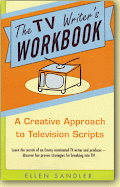



.png)



